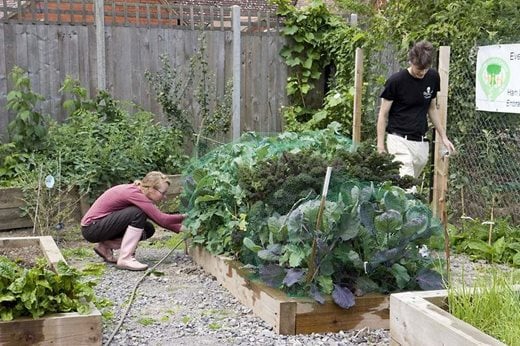Raising soil by 15-50cm (6-20in) can improve drainage, ease the management of plants, and reduce the amount of back bending needed.
 Busy gardeners and those who have clay soils, a wet climate, or health or strength problems all find raised beds especially helpful.
Busy gardeners and those who have clay soils, a wet climate, or health or strength problems all find raised beds especially helpful.
Working from the pathways means that the beds are not trampled, and digging can often be omitted. Limited supplies of manure can be concentrated on the area of the beds. In wet seasons the soil in raised beds will be workable more often than soil that has not been raised.
There are many ways to raise a bed:
Wooden boards are commonly used, and are ideal for the allotment. Pressure-treated timber lasts longest, and modern wood treatments do not contain arsenic or chromium. As old carpets are best avoided, wood chips (often donated by council tree surgeons) can be used to floor paths between beds. Enhanced drainage means the soil warms up and becomes workable earlier in the year, allowing earlier sowing and planting.
At the end of the season, winter waterlogging is less likely to harm mature plants. Both slugs and root diseases are much less problematic in the well-drained conditions of raised beds, but in droughts the beds may need more watering. To some extent, preparing the soil beneath raised beds by double digging first will increase potential rooting depth and help plants cope with drought, as indeed will generous mulching of plants.

